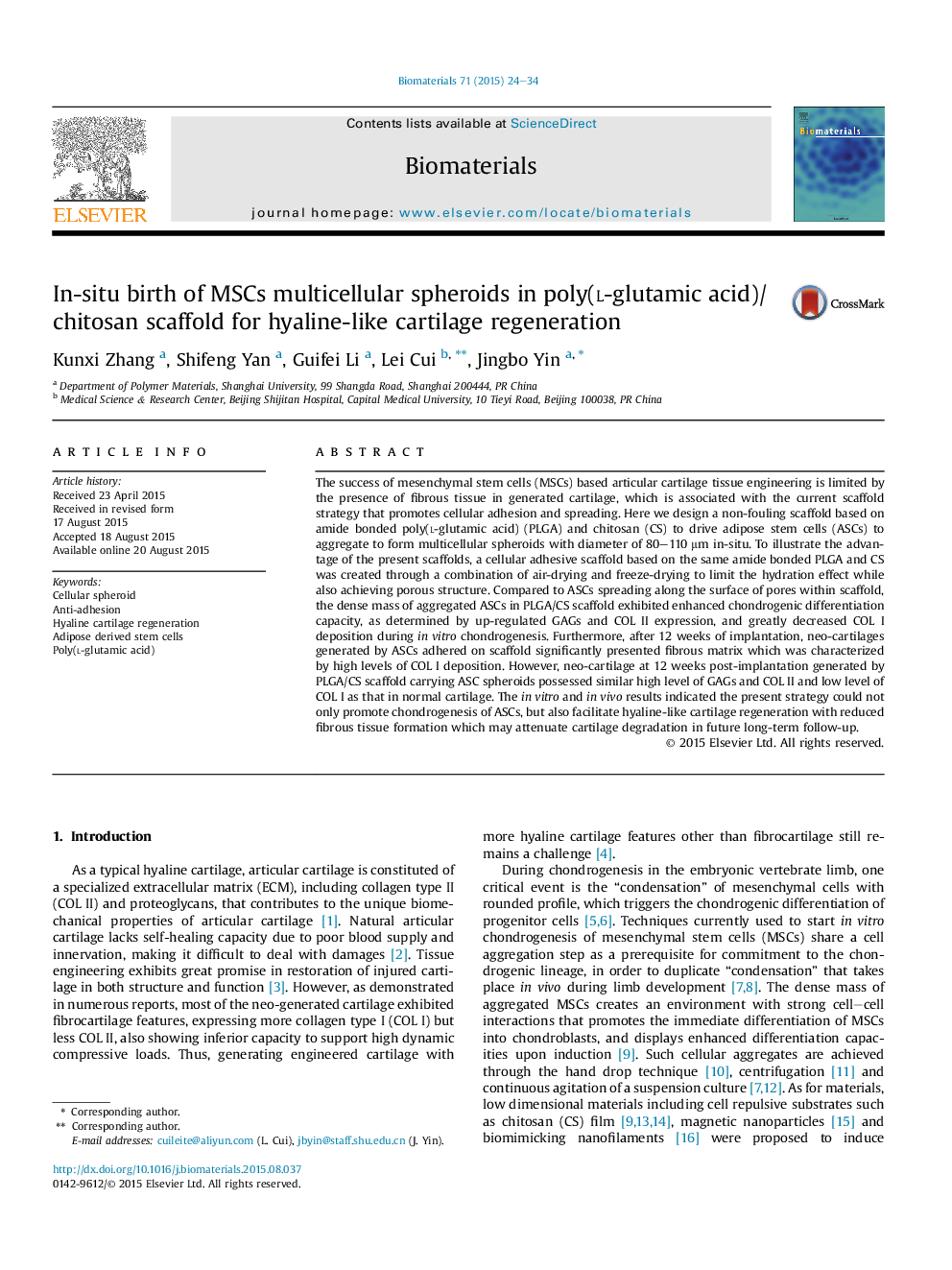| Article ID | Journal | Published Year | Pages | File Type |
|---|---|---|---|---|
| 5481 | Biomaterials | 2015 | 11 Pages |
The success of mesenchymal stem cells (MSCs) based articular cartilage tissue engineering is limited by the presence of fibrous tissue in generated cartilage, which is associated with the current scaffold strategy that promotes cellular adhesion and spreading. Here we design a non-fouling scaffold based on amide bonded poly(l-glutamic acid) (PLGA) and chitosan (CS) to drive adipose stem cells (ASCs) to aggregate to form multicellular spheroids with diameter of 80–110 μm in-situ. To illustrate the advantage of the present scaffolds, a cellular adhesive scaffold based on the same amide bonded PLGA and CS was created through a combination of air-drying and freeze-drying to limit the hydration effect while also achieving porous structure. Compared to ASCs spreading along the surface of pores within scaffold, the dense mass of aggregated ASCs in PLGA/CS scaffold exhibited enhanced chondrogenic differentiation capacity, as determined by up-regulated GAGs and COL II expression, and greatly decreased COL I deposition during in vitro chondrogenesis. Furthermore, after 12 weeks of implantation, neo-cartilages generated by ASCs adhered on scaffold significantly presented fibrous matrix which was characterized by high levels of COL I deposition. However, neo-cartilage at 12 weeks post-implantation generated by PLGA/CS scaffold carrying ASC spheroids possessed similar high level of GAGs and COL II and low level of COL I as that in normal cartilage. The in vitro and in vivo results indicated the present strategy could not only promote chondrogenesis of ASCs, but also facilitate hyaline-like cartilage regeneration with reduced fibrous tissue formation which may attenuate cartilage degradation in future long-term follow-up.
